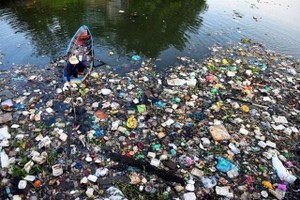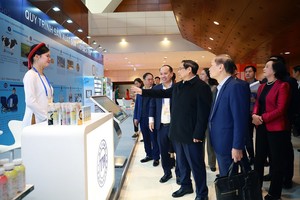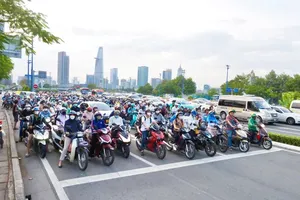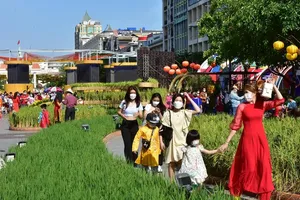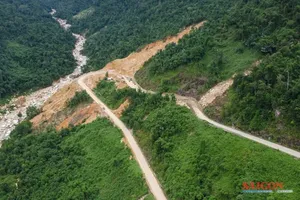The Ho Chi Minh City Department of Natural Resources and Environment hosted a seminar on water source protection yesterday when delegates said that clean water supply had never been under such a serious threat then with increasing saline and chemical pollution.
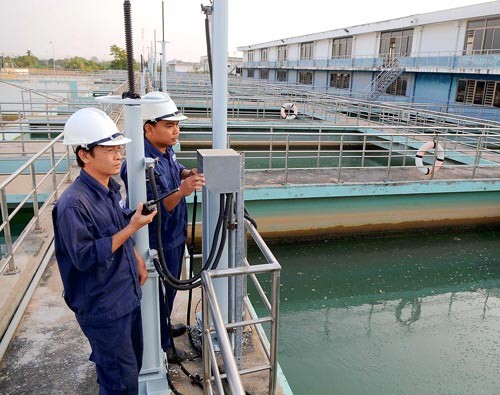
Tan Hiep water supply plant had to stop taking water for three times last week because of high salinity.
According to water quality observation results by the Southern Irrigation Planning Institute, since early February the salinity has increased 53 times over the same period last year in the lower reaches of Saigon River.
Saltwater has far penetrated into the upper reaches of the river badly affecting the supply for water treatment plants.
Besides saltwater, Saigon River has been polluting with industrial and household wastewater.
Mr. Bui Xuan Thanh from the HCMC University of Technology said that water plants supply the city with an average of 1.8 million liters of fresh water a day, wastewater volume accounts for 80 percent of that. However the city has been able to treat 150,000 cubic meters of wastewater a day at Binh Hung wastewater treatment plant.
The remaining part flows into canals and rivers. Water quality observation results have showed beyond permissible limit norms on PH, BOD5, COD and coliform at five main canals running into Saigon River including Nhieu Loc-Thi Nghe, Doi-Te, Tau Hu-Ben Nghe, Tan Hoa-Lo Gom and Tham Luong-Vam Thuat.
The worst concern is that saline and chemical pollution has been increasing to threat Saigon and Dong Nai Rivers while Vietnam’s water treatment technology has not been renovated appropriately.
The currently used technology is purification, flocculation and decontamination, which suiting river water quality of standard A1 not the polluted water, said Mr. Thanh.
Water quality studies since 2011 by a group of authors from the University of Technology have found micronutrients causing sex change and plant protection substances causing cancers in raw water. The pollution of these substances in Saigon River is higher than Dong Nai River and tenfold the level in developed nations. The country’s technology is unable to treat these substances.
Moreover, fluoridation of microbiological contaminated water creates trihalomethanes (THMs), a cancer causing substance for long users.
Saigon Water Supply Company has built many measures to cope with the saline and mechanical pollution, for instance it has changed the schedule of taking water, increased raw water cistern system and built water treatment plants in different locations to reduce risks. The company has calculated removing their hydrant system to the upper reaches but it is still considered because of high expenditure.
The Southern Irrigation Planning Institute said that it necessary to count the water quality of hydropower reservoirs, where industrial and household wastewaters from industrial parks and residential areas in the upper reaches have flowed into.
Water treatment plants should soon buy membrane filtration technology to deal with polluted water quality reduction. The key solution is to treat all industrial and household wastewater before discharging these into rivers.
Wastewater treatment plants should quickly be built and put into operation including Tham Luong-Ben Cat, Nhieu Loc and Thi Nghe, Binh Tan and Tay Sai Gon. Work should be sped up to build sludge handling plants, dredge canals and install sewer grates at sluice gates.

